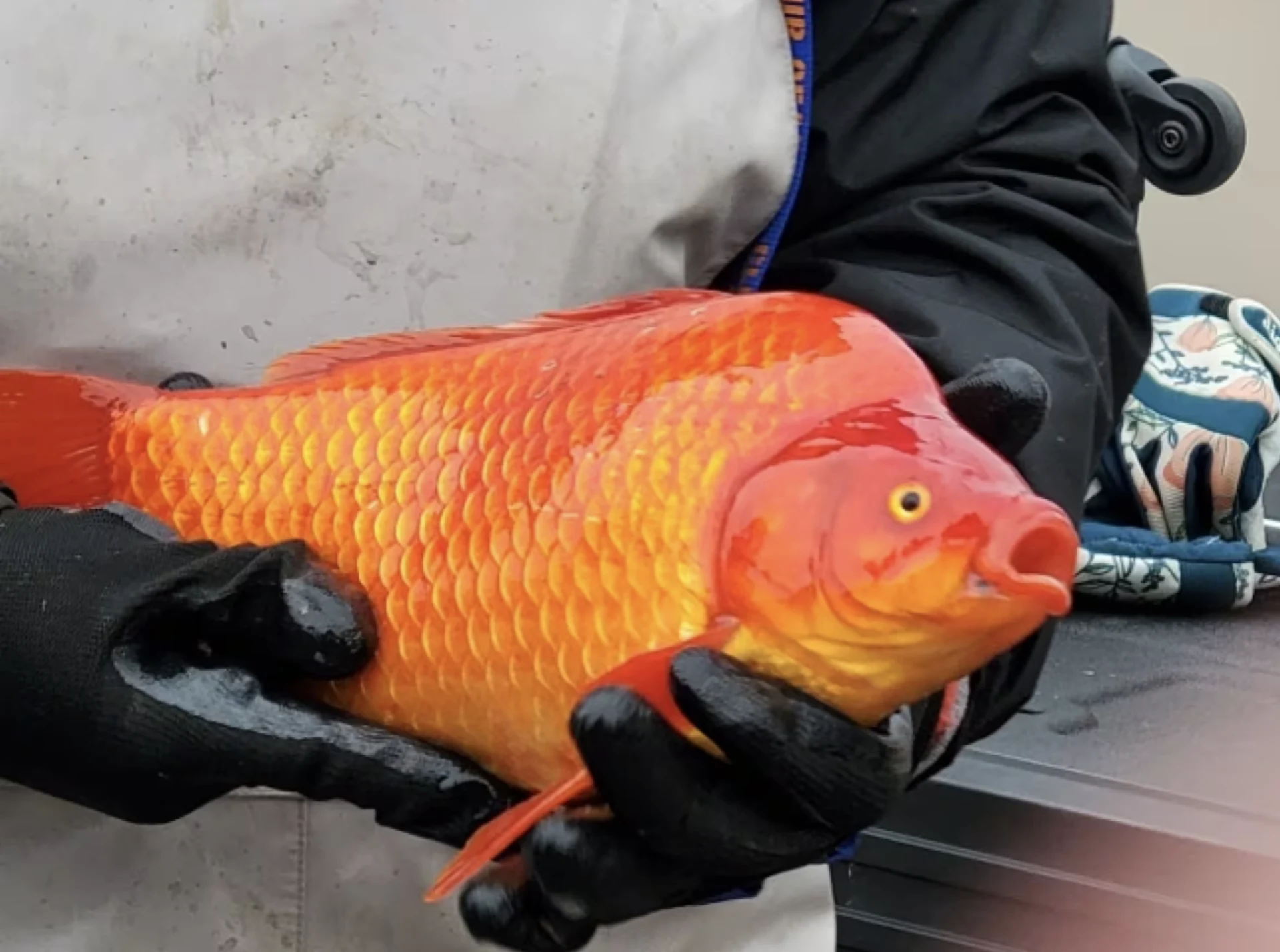
The London feral goldfish population persists, killing native species
Aquatic biologists are warning that goldfish continue to multiply in the Thames River, its tributaries, and storm ponds, threatening at-risk native species.
The fish, first detected in 2001, are now in Stoney Creek, Dingman Creek, the Sifton Bog and Westminster Ponds, as well as a number of other areas. They were once pets in goldfish bowls but owners released them into the wild.
"They're voracious feeders. They'll eat pretty much everything," said Erin Carroll, an aquatic biologist with the Upper Thames River Conservation Authority (UTRCA).
"We have some very sensitive species in the Thames that possibly will become extinct if we don't take measures to reverse the trends."

Signs such as this one at Sifton Bog have been placed in environmentally sensitive areas around the city, instructing people not to make their unwanted pets into unwanted pests. (Colin Butler/CBC News)
In addition to being hungry and destructive, goldfish are known for having extraordinary reproductive abilities, Carroll said. Their ability to reproduce multiple times per season and quickly balloon in population size has made the small fish a big problem across the country, including in British Columbia, Alberta, and other communities in Ontario.
RELATED: Football-sized goldfish cloning themselves in B.C., Ontario waters
"We get a few detections a year, but other studies have found in stormwater ponds that they can find upwards of 10 to 20,000," she said.
They also grow much larger in the wild than they do when confined to a fishbowl, with Carroll noting she's heard reports of golfish weighing as much as 6lb. Elsewhere in Canada and the United States, goldfish have been reported to reach the size of footballs.
WATCH | Football-sized goldfish found in Minnesota lakes is cause for concern
SEE ALSO: Giant goldfish in Niagara River a reminder not to flush pets
In recent years, the UTRCA has stepped up efforts to educate the public about never releasing goldfish into the wild. Those efforts include signage along sections of London's waterways.
Meanwhile, a wider-reaching education effort is underway across Canada.
The Don't Let it Loose campaign is headed by the non-profit Invasive Species Centre, based in Sault. Ste. Marie, and includes a reporting tool for those who spot invasive species.
"Goldfish have landed in these water bodies as a result of people releasing them either directly into a lake or river, or into a connected body of water," said Jenna White, who speaks for the Invasive Species Centre. "They're both putting their pet at risk of predation, and also risking the entire ecosystem."
SEE ALSO: New invasive aquatic species found in Nova Scotia

Yes, that's a goldfish. Workers with the city of Lethbridge, Alta., have been pulling out giant aquatic invaders, like the one pictured, from stormwater ponds. (City of Lethbridge)
Goldfish have been in Canadian waterways for over one hundred years, according to White. In recent years, however, the problem has accelerated, possibly due to warming temperatures that goldfish are adaptable to, and native species are not.
While populations explode, and municipalities and conservation authorities grapple with costly bills related to removal efforts, White still says the most important method of controlling the goldfish population is education.
"It's important for people to be educated on the responsibilities of owning a goldfish, especially in terms of their lifespan and requirements of care," she said, adding goldfish have lived as old as 40 years of age in extreme cases.
It's important to have a back up plan in case caring for a fish is no longer feasible, White added.
"Absolutely never let it loose."
WATCH | Giant goldfish caught in Lake Erie:
This article, written by Alessio Donnini, was originally published for CBC News.